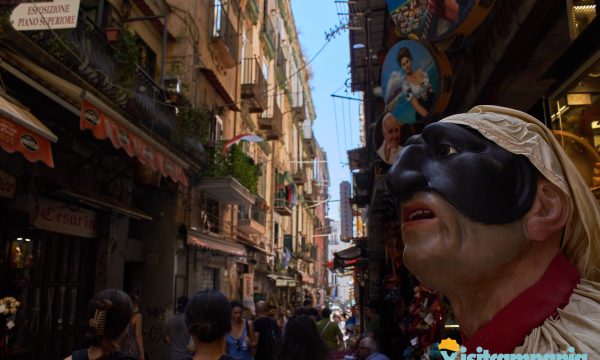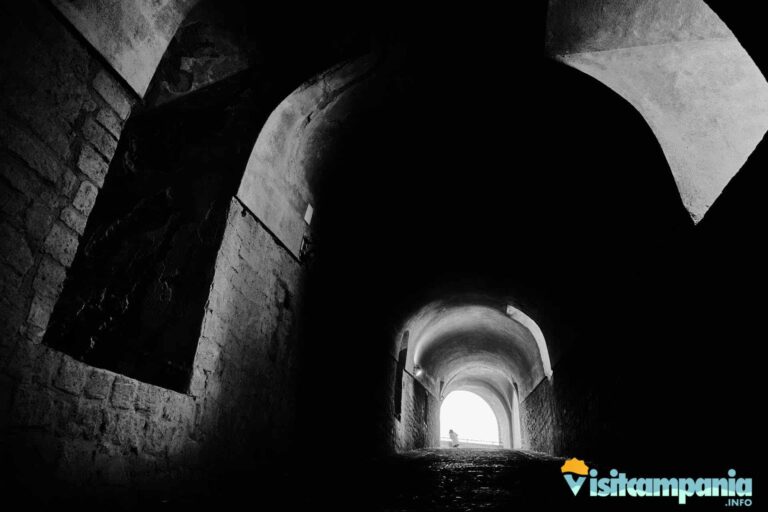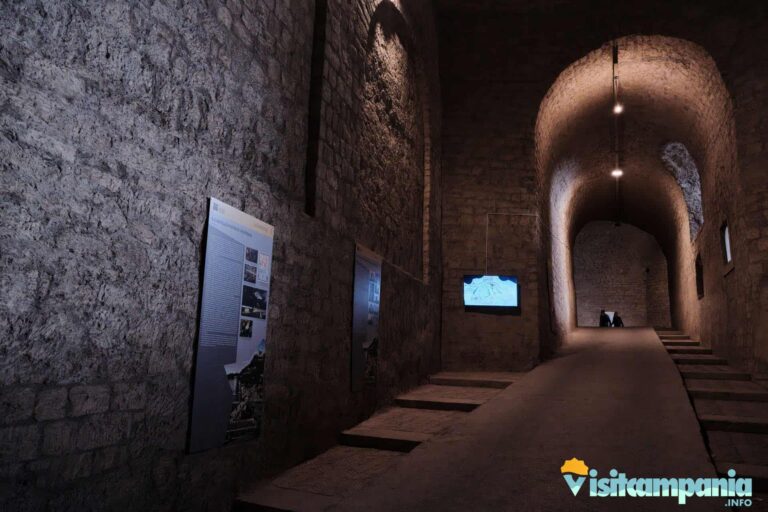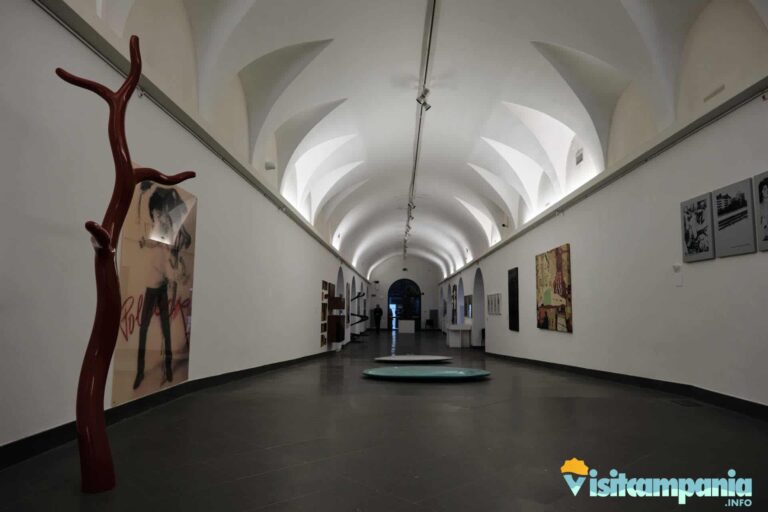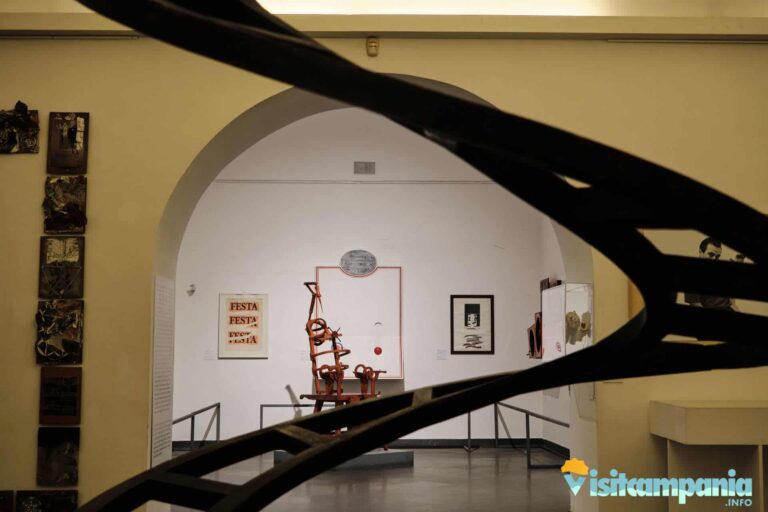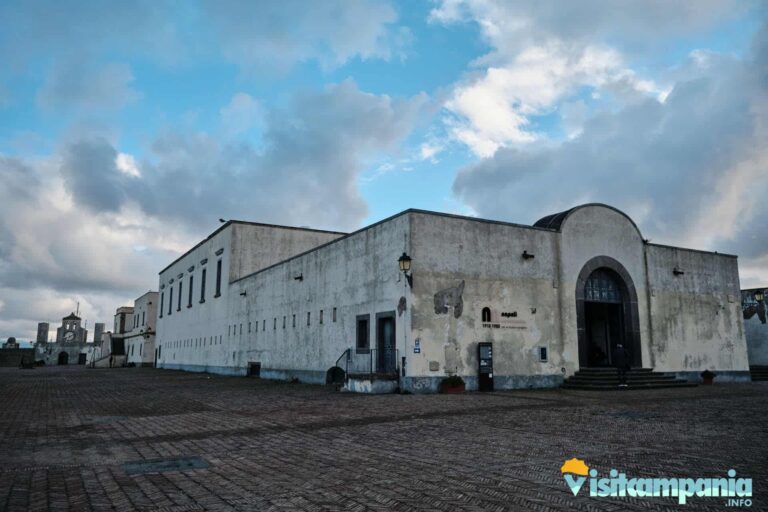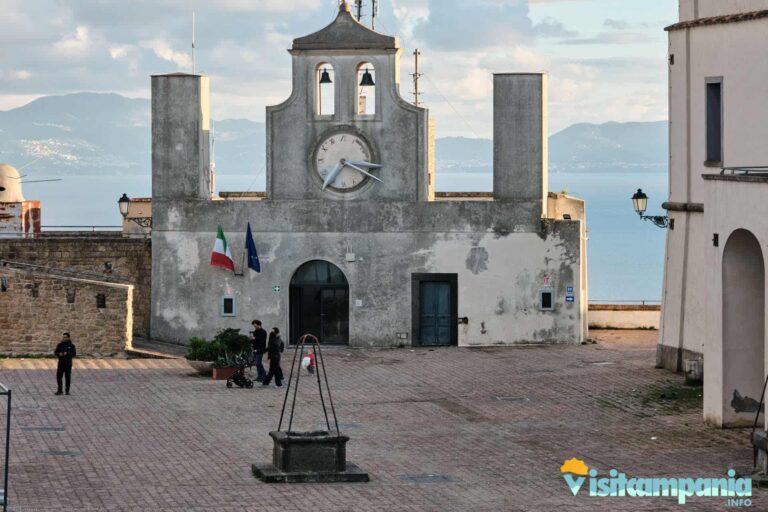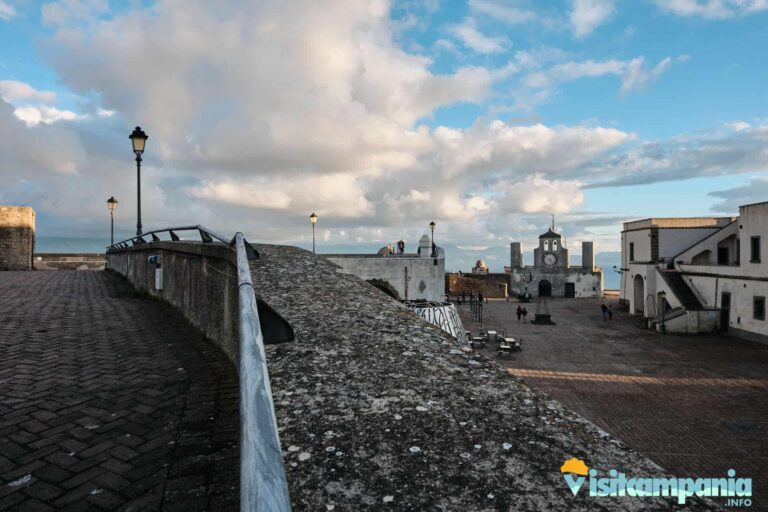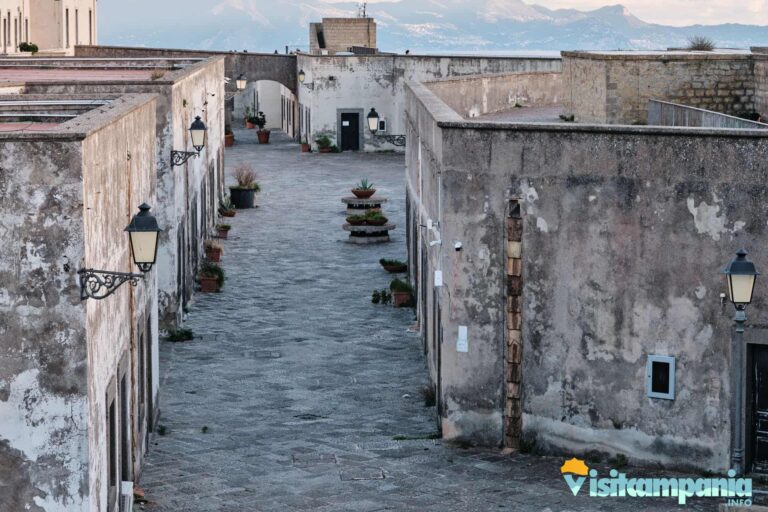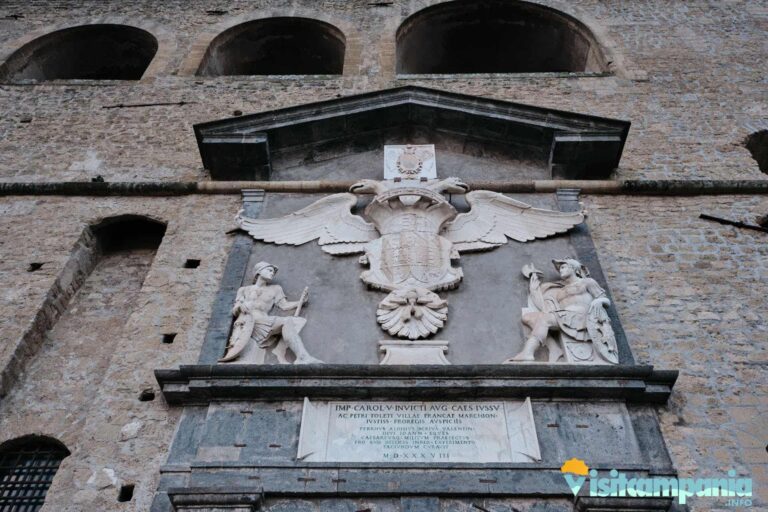Sant’Elmo castle and the museum of the twentieth century: history and modernity in Naples
Imagine a medieval castle almost dug into the tuff, with drawbridge, dungeons haunted by ghosts and impenetrable walls, overlooking and controlling the city below. Imagine, then, a museum dedicated to modern art and its thousand manifestations where shapes and colors seem to come out of the white walls. Now put these two images together and you will have the Sant’Elmo castle and museum of the twentieth century.

History of Sant’Elmo castle, the fortress overlooking the Gulf of Naples
The origins, Belforte and castrum Sancti Erasmi
The documented history of the castle, which in reality is not yet a castle, starts in 1275 when Charles of Anjou decides to build a more or less fortified palace on the Vomero hill. The place, although isolated from the rest of the town, is not deserted. There is already a Norman observation tower and a chapel dedicated to St. Erasmus.
The palace, called Belforte, was further enlarged and fortified in 1329 at the behest of Robert of Anjou and became castrum Sancti Erasmi. To take care of the work is the Sienese architect Tino da Camaino who is already working on the Chartreuse of San Martino, right there a stone’s throw away.
The cheerful family of Anjou
In 1381 the castle experienced its first siege. The troops of Charles of Anjou Durazzo enter the city determined to oust Queen Joan I of Anjou, cousin of Charles. In a short time the besiegers have the upper hand forcing the surrender of the queen who, in the meantime, has barricaded herself in Castel dell’Ovo. King Charles thus becomes King of Naples with the name of Charles III and immediately kills Giovanna guilty of having plotted, killing him, against her ex-husband, Prince Andrew. A few years later, in 1386, it was also Charles’ turn to die at the hands of a relative, his aunt Maria of Hungary, in another conspiracy. When you say a beautiful family.
From castrum Sancti Erasmi to Sant’Elmo castle
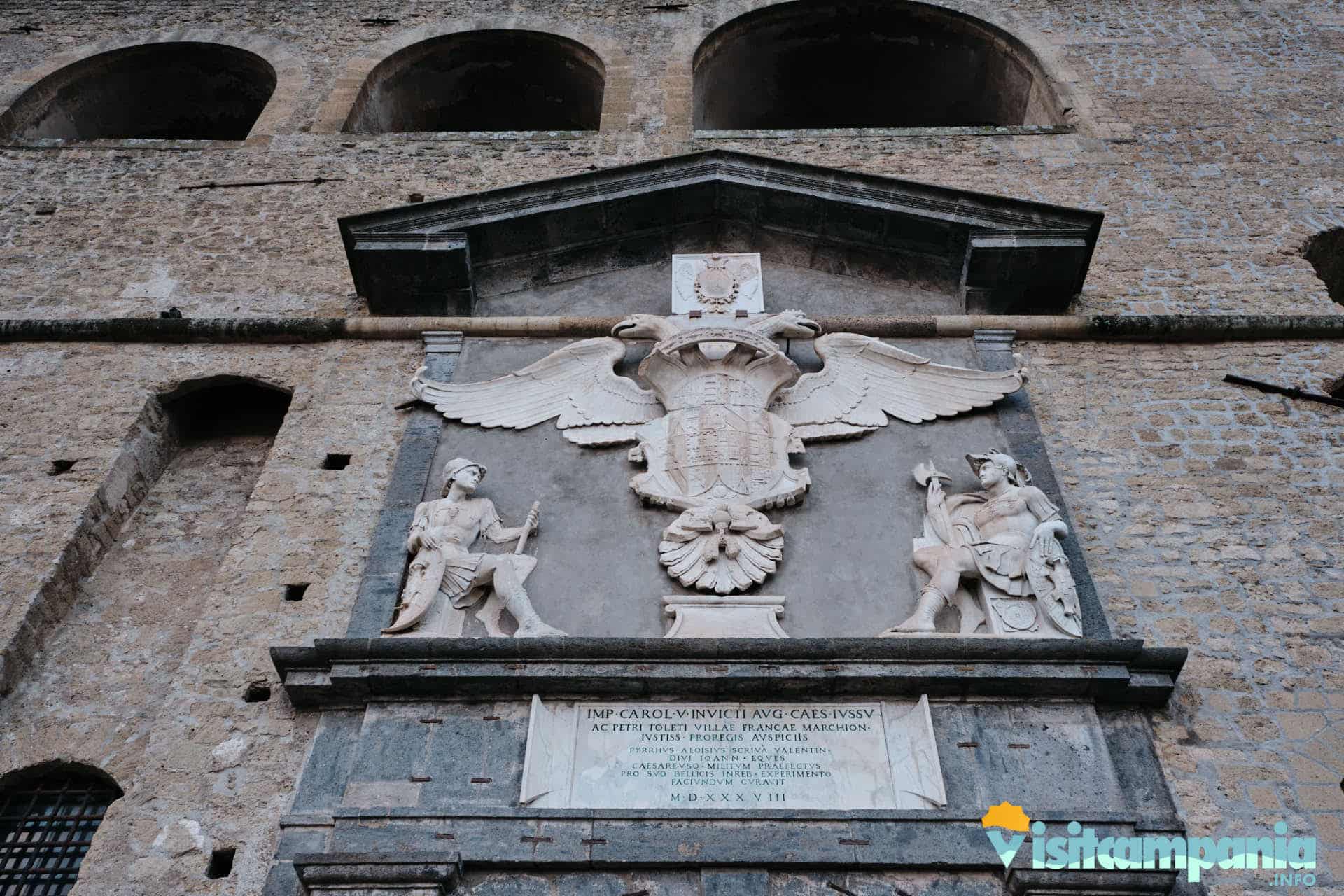
But let’s go back to the history of the castle. It is 1537 and the Aragonese, after years of wars and complicated dynastic events, have taken the place of the Angevins. Viceroy Don Pedro De Toledo decided to expand the castle at the behest of Emperor Charles V of Habsburg. The works, entrusted to the architect Pedro Luis Escrivá last ten years and completely distort the original structure of the fort that becomes a real fortified citadel. The original quadrangular plan is replaced by an innovative star structure, called double pincers. The name also changes. From the original Castel Sant’Erasmo to Sant’Ermo castle and then to Sant’Elmo castle.
Not even the time to dismantle the scaffolding and a new popular revolt upsets Naples. We are in 1547 and Don Pedro De Toledo issues a decree for the establishment in the city of the tribunal of the Holy Office (Inquisition). For the castle it is a new baptism of fire. The people rebel and Don Pedro does not hesitate to bombard the city from the walls of the fort. In the end the tribunal will never be established, a unique case in the world of the time, but Don Pedro will remain in place.
In 1587 lightning struck the powder magazine inside the fort and caused extensive damage and many deaths among the soldiers stationed. This time the works, which lasted from 1599 to 1610, were entrusted to the architect Domenico Fontana who renovated the parade ground and rebuilt the church.
In the meantime the castle has become a prison and will remain so until 1952 hosting in these long years, among others, the philosopher Tommaso Campanella, several revolutionaries of the Neapolitan Republic such as Ettore Carafa and other patriotic revolutionaries such as Francesco Pignatelli di Strongoli.
Masaniello and the castle at the center of the world
Before arriving to the present day there are still two important dates in the history of the fort.
The first is July 1647 when Masaniello leads the revolt of the lazzari against the increase in taxes decided by the Spanish viceroy Rodrigo Ponce de León, Duke of Arcos. As happened a century earlier, artillery shots start from the castle to quell the revolt and reaffirm, once again, its repressive rather than defensive role.
The second is 1812, the year of the first publication of the Geographical Atlas of the Kingdom of Naples. Built on the impulse of King Ferdinand IV of Bourbon by the cartographer Giovanni Antonio Rizzi Zannoni, it was intended to represent the possessions of the Bourbon Kingdom according to modern and scientific criteria. Having to choose a geographical reference for cartographic representations, Rizzi chose Sant’Elmo castle which, in practice, became the center of the Bourbon world.
And we come to the present day. We have already said about the destination to prison until 1952. It remains to add that in 1976 the important restoration work begins , which sees its peak with the opening to the public in 1988. Finally, in 2010, the Museum ‘Napoli Novecento 1910-1980’ was set up on the Piazza d’Armi. In 2014 UNESCO expanded the part of the historic center already subject to protection and included the castle area as a World Heritage Site.
What to see in Sant’Elmo castle and museum of the twentieth century
As it is easy to imagine there are two things to see. The castle, intended as an architectural structure, and the museum set up inside it.
The Castle
The double pincer star plan
Let’s start from the fort, of medieval origin, which dominates the entire city from the Vomero hill.
Its current form is due to the works directed by the architect Pedro Luis Escrivá and carried out between 1537 and 1547 although, following an explosion caused by lightning, further works affected the parade ground and the church at the beginning of the seventeenth century.
The original quadrangular plan was replaced by the current structure called double pincer, with a stellar plan with six points that protrude twenty meters from the central part and consisting of scissors on the short sides and struts on the long sides. This particular plan makes Sant’Elmo castle the only six-pointed castle in the world and was adopted to adapt to the orography of the place and allow, through crossfire, the defense of the entire perimeter and the elimination of dead spots.
At the time of construction, this particular structure aroused many controversies for the absence of towers. However, history has shown its effectiveness and it is one of the elements behind the inclusion of the site, in 2014, in the area of the historic center of Naples already a UNESCO World Heritage Site.
Escrivá realizes, among other things, a parade ground with housing for the military, a moat, and defensive tunnels on the lower levels of the fort. The castle was also equipped with a butcher’s shop, mill, oven and two large cisterns in order to ensure food autonomy in case of siege.
We enter Sant’Elmo castle
The castle, preceded by the small church of Our Lady of Pilar built in the seventeenth century, is accessed via a drawbridge located 20 meters high over the moat. On the bridge there is a monumental portal surmounted by the imperial coat of arms of Charles V of Habsburg and a marble inscription in memory of his reign and the viceroy Don Pedro de Toledo.
Beyond the portal, the atrium is defended by loopholes to allow the guards to defend themselves if they were surprised before closing the drawbridge.
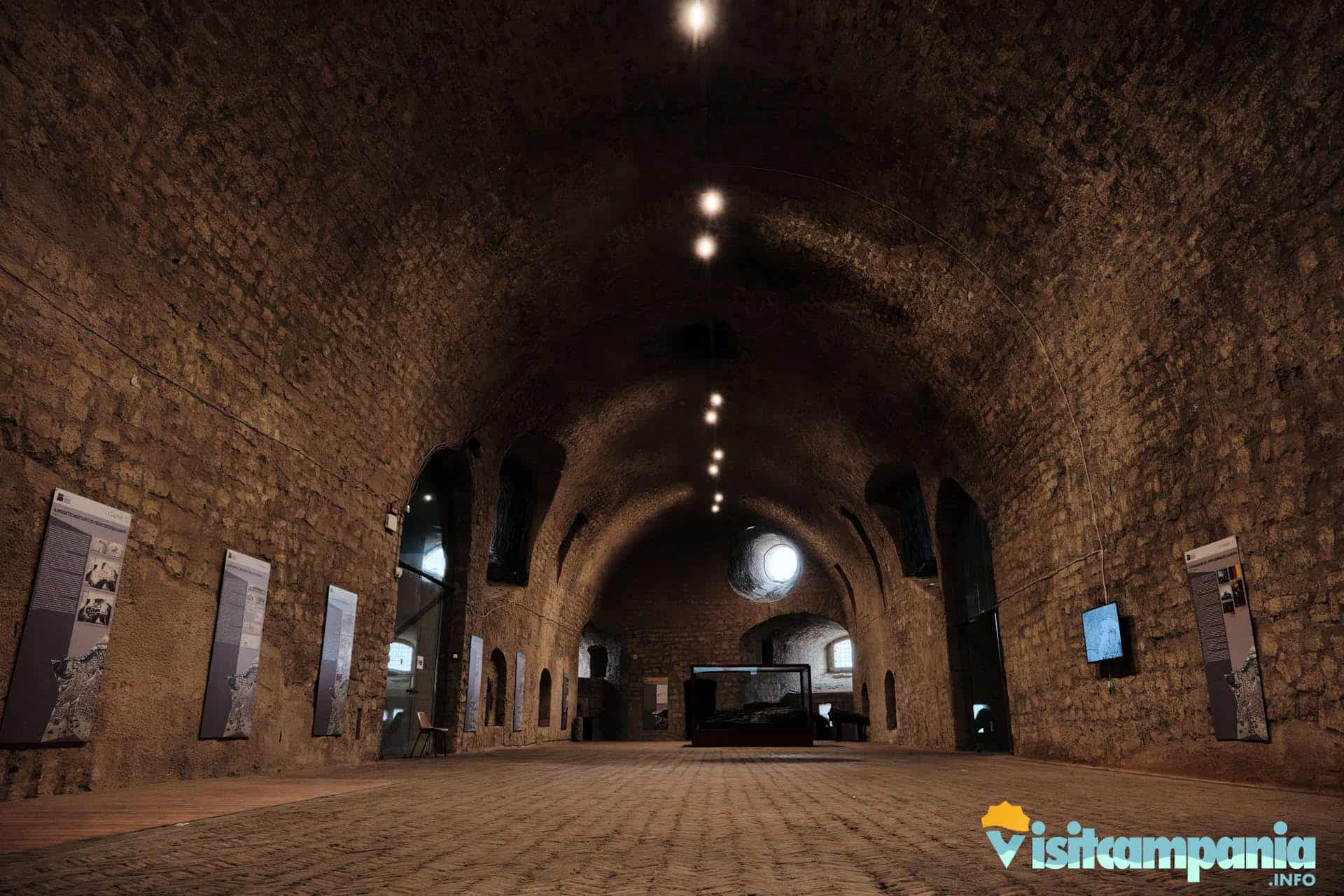
You can then access the cave of the Hermit and other large rooms crowded with information billboards, very well done, and monitors that cyclically transmit videos on the main historical events of the castle.
Finally, a large covered walkway leads to the parade ground, the true beating heart of the building.

On it insist the church of Sant’Erasmo and what remains of the Castellano tower today house, among other things, the museum of the twentieth century. The large square is enclosed by terraced walls from which you can admire a splendid view of the Gulf of Naples and the whole city up to the Matese mountains, in the distance. Not to be missed is the view from the northwest side that overlooks the chartreuse di San Martino sweeps up to Vesuvius and allows you to grasp in its entirety the long loophole of Spaccanapoli that affects the historic center.
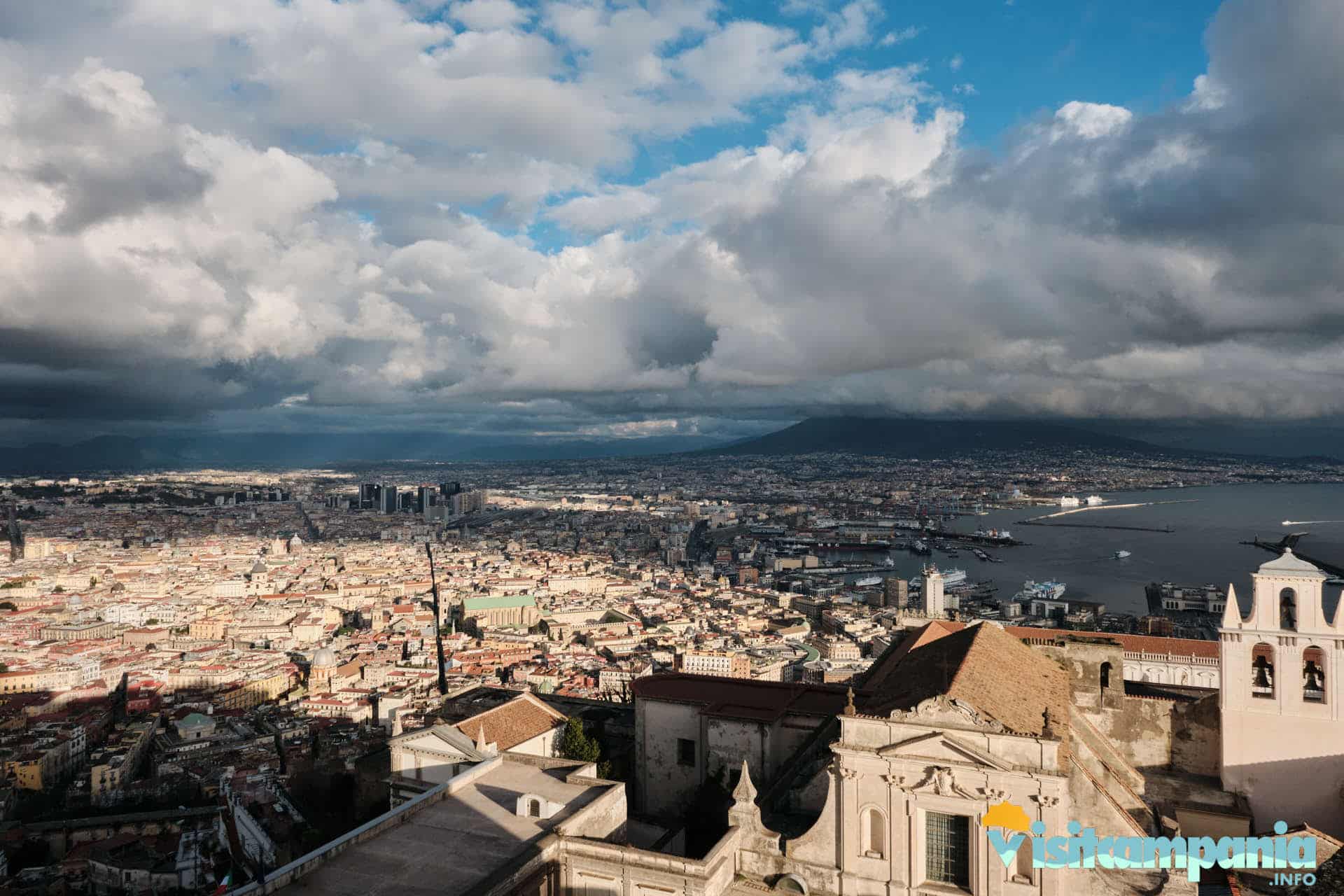
Naples and modern art: visit to the museum of the twentieth century
Before concluding the visit of the complex, we just have to make an extraordinary journey through time entering the exuberant collections of the museum of modern art.
Inaugurated in 2010 to document the Neapolitan artistic evolution in the period 1910-1980, it collects over 170 works including paintings, sculptures and installations, created by Neapolitan artists or otherwise intimately linked to the city. However, thanks to the competition Un’opera per il Castello, periodically promoted by the Regional Directorate of Campania Museums, the museum continuously expands its chronological boundaries with the works of the young winning artists.
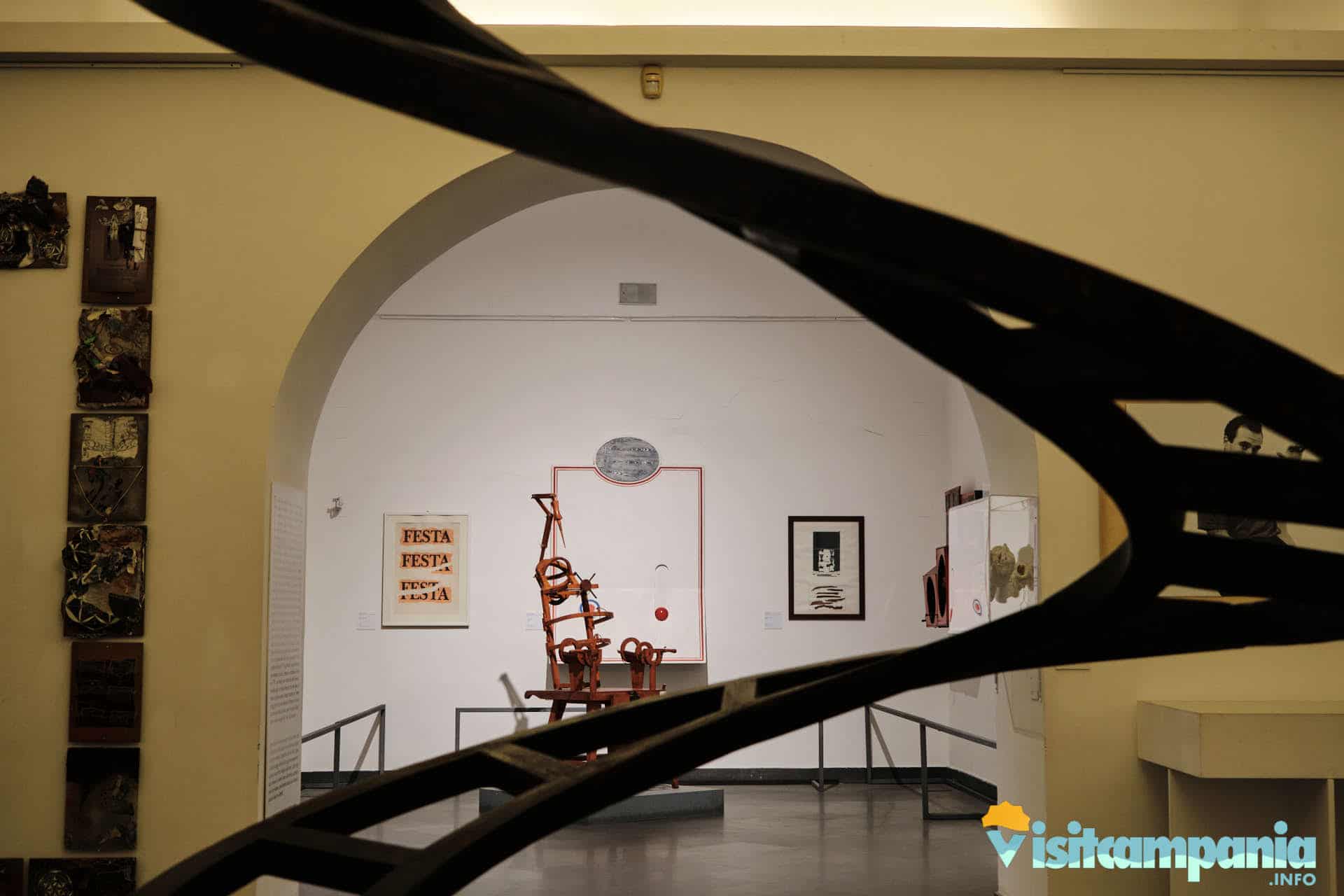
The tour of the museum is organized by sections and covers the main movements of modern art from futurism to neorealism. In particular, there are sections dedicated, among others, to the Secession of the Ventitré, to the Circumvisionists, to the Group ’58.
In addition to permanent exhibitions, Sant’Elmo castle and museum of the twentieth century are often the scene of temporary exhibitions, artistic events and concerts.
Legends and ghosts of Sant’Elmo castle
After so much information, I hope useful, we can not fail to mention the legends and myths that surround a place so rich in history and charm.
The first legend concerns the shape of the castle and, in particular, its six-pointed shape. We have already talked about it by illustrating the rational motivations behind it. However, there is no shortage of interpretations that lead her back to the cabal and esotericism with particular reference to the hexagram of Jewish origin or Star of David. Others see it as a symbol of cosmic balance always of an esoteric nature.
And here we are with the ghosts. Such an ancient castle, moreover used as a prison for hundreds of years, can certainly not be without it. Indeed, to hear the popular legends it would even be infested. It is said, in fact, that from the dungeons of the castle you hear, from time to time, screams and heartbreaking moans. They are the ghosts of people left to die alive devoured by rats after being tortured by guards.
Finally, pay attention to the ghost of the Pedamentina, the panoramic staircase that descends from the castle area to the Spanish Quarters. He is dressed in white and loves to scare visitors to the fort. Enjoy your visit!
Tips and curiosities
- The entrance ticket to Sant’Elmo castle and museum of the twentieth century, as well as at the physical ticket office at the entrance , can also be purchased online. In addition, if you are planning to visit other monuments of the rich regional heritage, consider buying the Artecard card, the official tourist pass of the Region, in one of its various formats that will save you time and money;
- From 3 April 2022, with the easing of the COVID emergency, the possibility of free access to state museums returns on the first Sunday of the month. Always check on the official website or call the contact center (+39 081 5587708) before organizing your trip;
To learn more
Istituto Italiano dei Castelli – Castel Sant’Elmo (website)
July 1547. Naples rises up against the Spanish Inquisition (website)


